NSPS OOOOb & OOOOc Rules on Methane: What You Need to Know

Discover key insights on the EPA’s finalized NSPS OOOOb and OOOOc rules targeting methane emissions in the oil and natural gas sector. Learn about the stringent measures, compliance requirements, and industry impacts of these essential regulations effective November 2022.
Refining Processes: Understanding Flare Requirements in EMACT
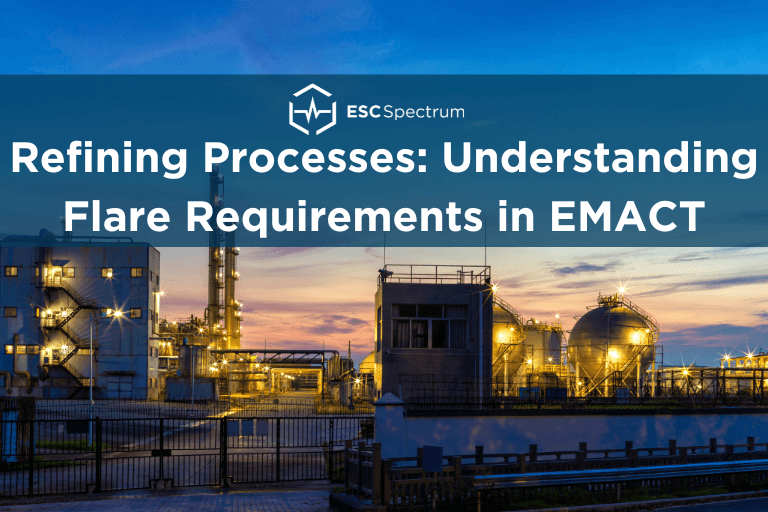
The Ethylene Manufacturing National Emission Standards for Hazardous Air Pollutants (NESHAP) under Subpart XX and YY establish requirements to control hazardous air pollutants (HAP) emissions from ethylene production units. This blog post focuses on the flare requirements specified in these regulations.
Gas Chromatography CEMS for Refining: Performance Specification 9
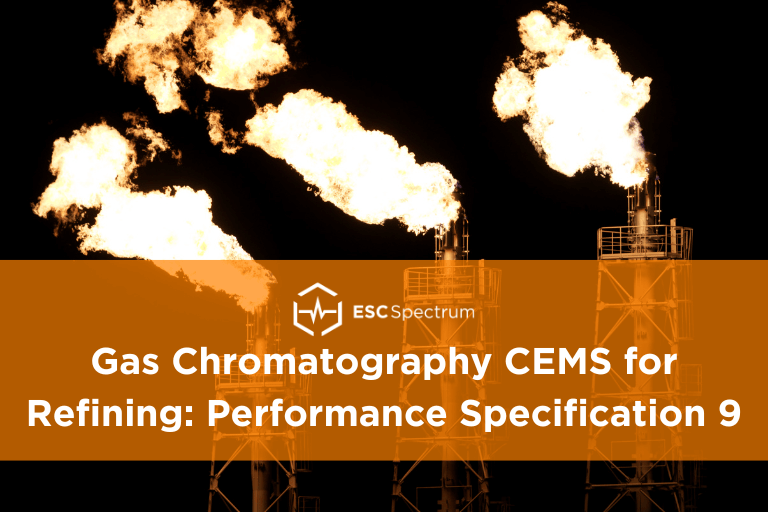
Learn more about 40 CFR Part 63 Subpart CC Performance Specification 9 to ensure accurate measurement of gaseous organic compound emissions. Performance Specification 9 (PS-9) establishes the requirements and procedures for Gas Chromatographic Continuous Emission Monitoring Systems (CEMS) in stationary sources.
Navigating Refining Regulations: 40 CFR Part 63 Subpart CC
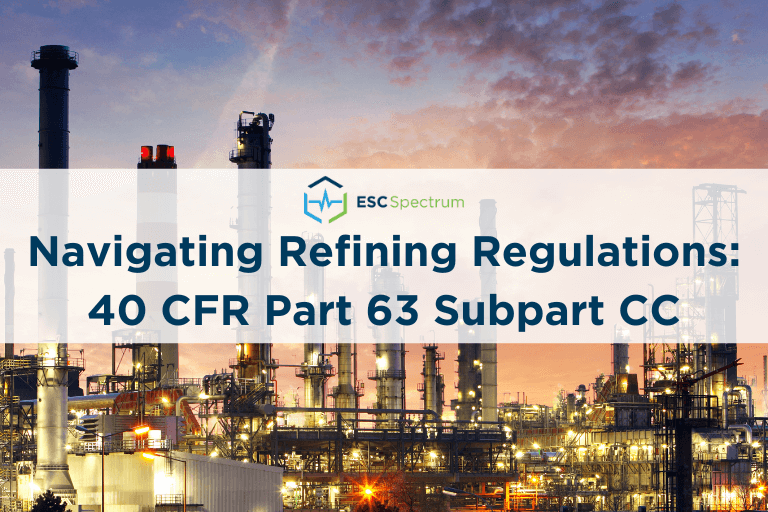
Learn more about National Emission Standards for Hazardous Air Pollutants from Petroleum Refineries specifically on 40 CFR Part 63 Subpart CC. This blog post outlines the steps to comply with Subpart CC and how ESC Spectrum can equip your facility to streamline emission monitoring needs.
Understanding Air Emissions Regulations for Industrial Cooling Towers & Heat Exchangers
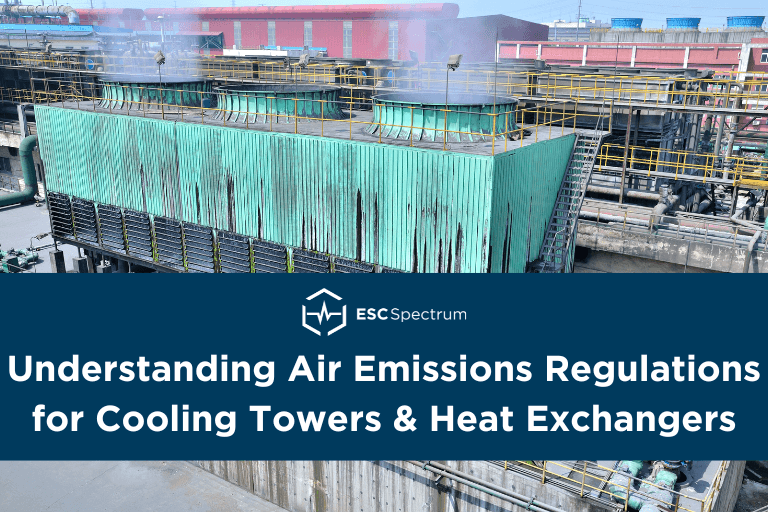
Explore industrial process cooling towers and heat exchangers and their requirements under NSR in Texas and nationwide.
Environmental Data Registry (EDR): A Guide to Effective Emissions Data Management
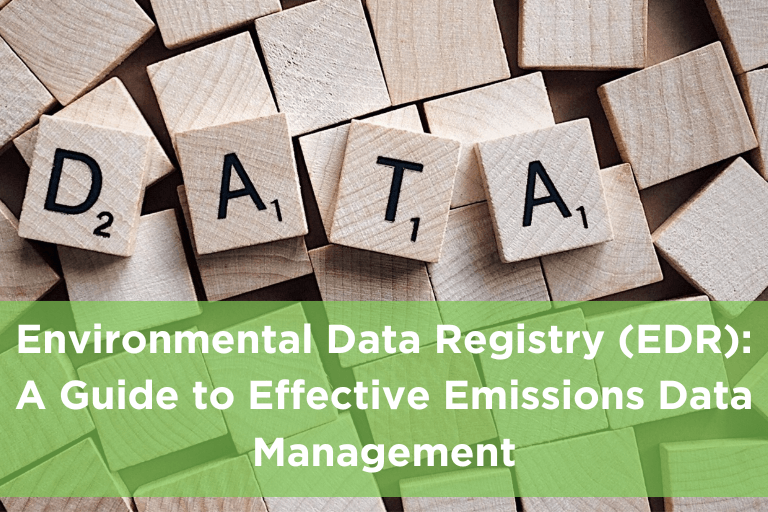
Dive into the world of Environmental Data Registries (EDRs) with our expert guide. Learn how to manage emissions data effectively, ensure compliance, and avoid errors. Explore practical tips and real-world solutions from industry experts.
2023 Regulatory Snapshot: Key Changes Unveiled
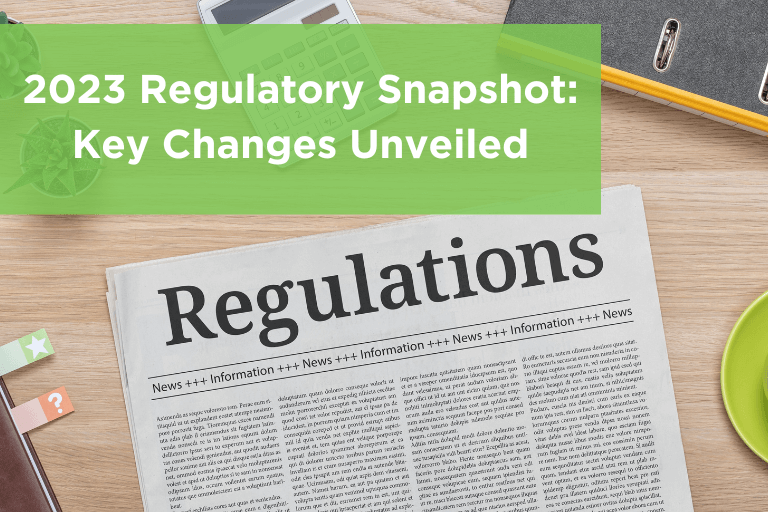
Dive into the 2023 key regulatory updates for ECMPS 2.0, MATS Residual Risk and Technology Review, Low Mass Emissions (LME), and more. Stay ahead of the curve as we guide you through each topic and equip you with the tools to navigate 2024.
Increasing Demand for Ethanol Affects Your Monitoring Systems

Read about how the increasing demand for ethanol can affect your continuous emissions monitoring system components at your ethanol facility.
Update on 40 CFR 63 Subpart YYYY – Formaldehyde Emission Standards

This blog post discusses updates on 40 CFR 63 Subpart YYYY including changes, who is subject to YYYY, facility limits and more. Compliance with changes is required within 180 days of March 9, 2022 (i.e., September 6, 2022).
How to Successfully Navigate July Reporting Month

July is the second busiest reporting period of the year; read our guide for tips and tricks to make reporting month feel like a breeze!
What the April 2022 Cross State Air Pollution Rule Federal Implementation Plan Means

Recent changes have been proposed by the Environmental Protection Agency (EPA) regarding the CSAPR Federal Implementation Plan. These proposed changes would have significant impact on industrial plants.
An Inside Look at Ethanol Regulations in the CEMS World

The 2007 EPA 40 CFR Part 60 permits’ rule about chemical process plants changed ethanol regulations for CEMS. After 15 years since this rule change, it could be time to update your ethanol plant’s emission monitoring system and possibly look for a DAS that helps comply with 40 CFR Part 60 regulations.
